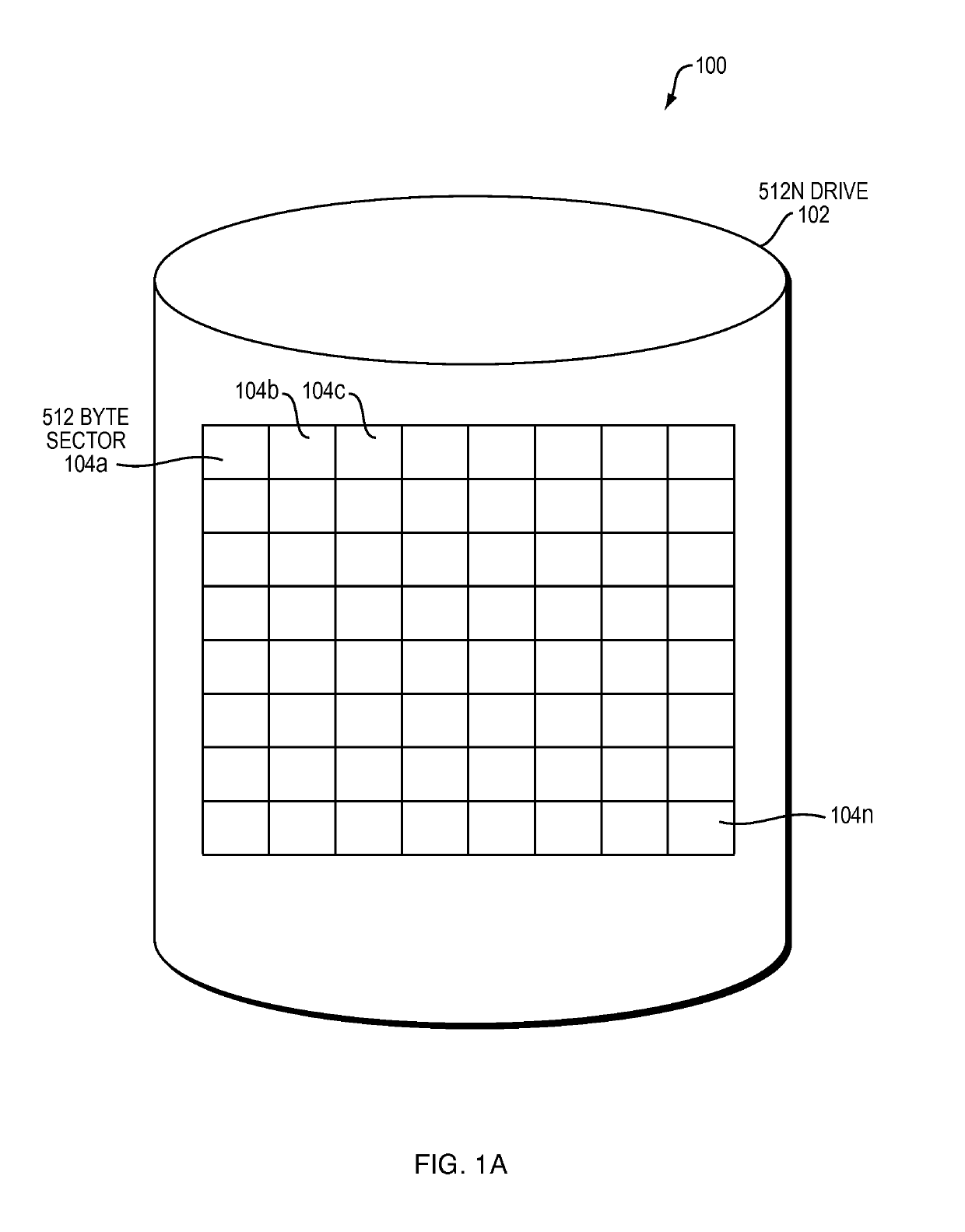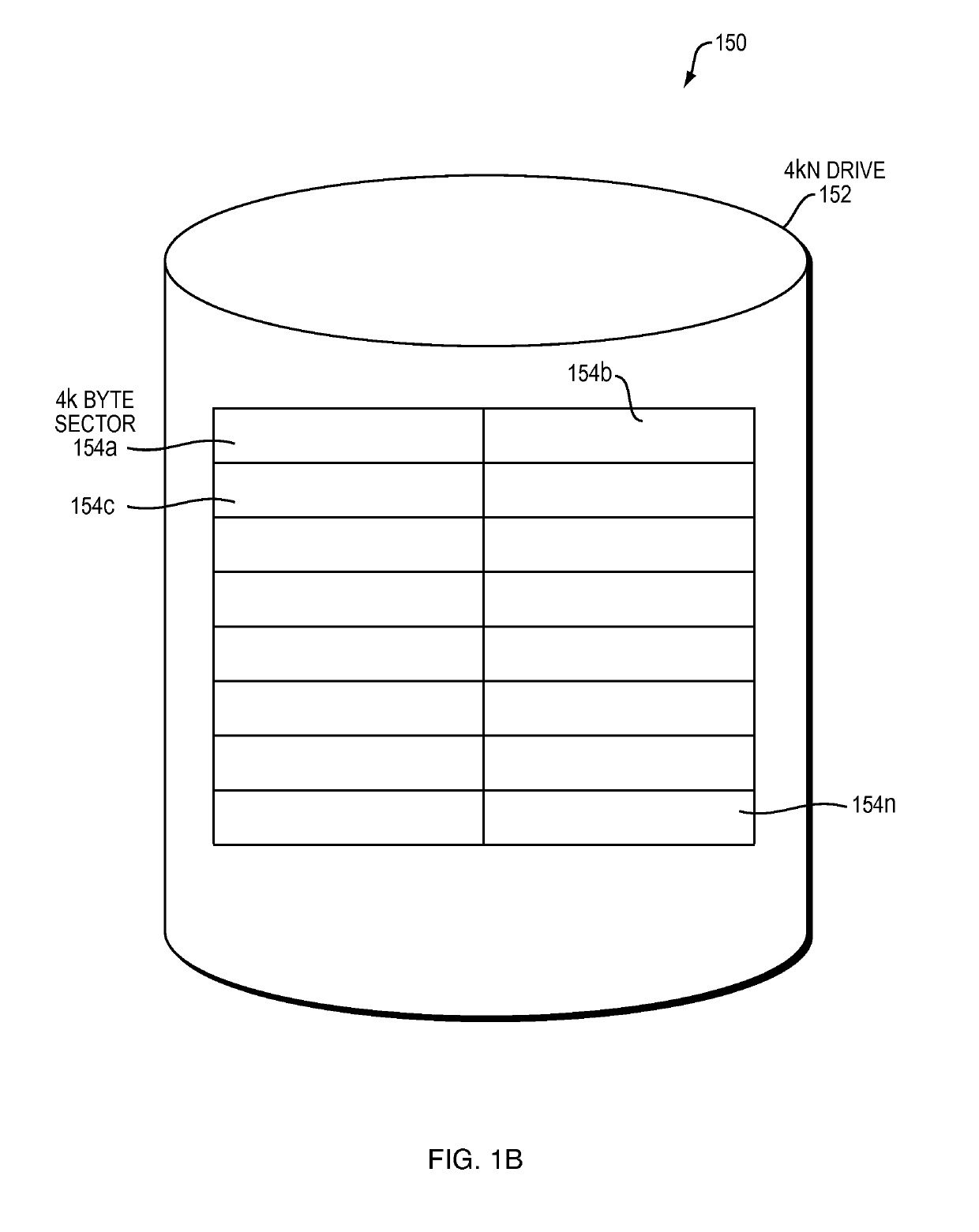System and method for supporting read requests and write requests for drives having different sector alignments without a RAID
a technology of read request and write request, which is applied in the direction of error detection/correction, input/output to record carriers, instruments, etc., can solve the problems of many other systems not being able to be modified, many consumers of these drives, and many process errors
- Summary
- Abstract
- Description
- Claims
- Application Information
AI Technical Summary
Benefits of technology
Problems solved by technology
Method used
Image
Examples
Embodiment Construction
[0057]A description of example embodiments of the invention follows.
[0058]FIG. 1A is a block diagram 100 illustrating an example embodiment of a 512N drive 102. The 512N drive 102 includes a plurality of sectors 104. The plurality of sectors 104 are broken into 512-byte sectors 104a-n. The 512-byte sectors 104a-n can be of any quantity that fills the space of the 512N drive 102.
[0059]FIG. 1B is a block diagram 150 illustrating an example embodiment of a 4 kN drive 152. The 4 kN drive 152 includes a plurality of 4 kB sectors 154. The 4 kB sectors 154a-n can be of any quantity that fills up the 4 kN drive 152. A 4 kN drive 152 includes approximately eight times fewer sectors than an equally sized 512N drive because the 4 kN drive sectors are eight times bigger.
[0060]FIG. 2A is a block diagram 200 illustrating an example embodiment of a RAID controller 202 performing a subtractive RAID operation. A subtractive RAID operation is a type of read-modify-write operation well known by a pers...
PUM
 Login to View More
Login to View More Abstract
Description
Claims
Application Information
 Login to View More
Login to View More - R&D
- Intellectual Property
- Life Sciences
- Materials
- Tech Scout
- Unparalleled Data Quality
- Higher Quality Content
- 60% Fewer Hallucinations
Browse by: Latest US Patents, China's latest patents, Technical Efficacy Thesaurus, Application Domain, Technology Topic, Popular Technical Reports.
© 2025 PatSnap. All rights reserved.Legal|Privacy policy|Modern Slavery Act Transparency Statement|Sitemap|About US| Contact US: help@patsnap.com



